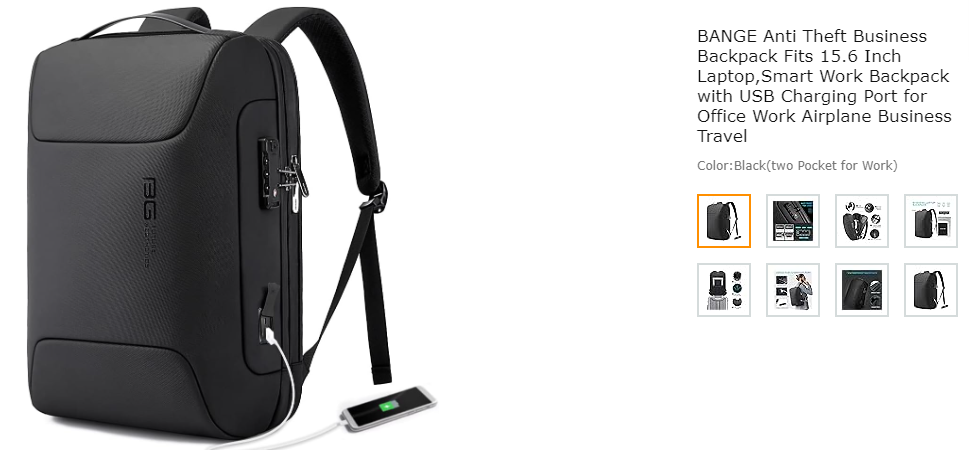Why Your Resume Matters
Your resume is often the first impression you make on recruiters, so having an excellent resume is crucial for job search success. Recruiters spend just seconds scanning each resume before deciding if you are a potential fit for the role or not. According to CareerOneStop, recruiters initially spend an average of just 6 seconds reviewing each resume.
With this minimal time, your resume needs to make an immediate impact and showcase your relevant skills and experience. As Indeed notes, your resume outlines your qualifications and value proposition for the job in just a page or two. It summarizes your background, abilities and achievements.
An excellent, customized resume greatly improves your chances of landing an interview. It’s your opportunity to grab the recruiter’s attention and make a stellar first impression before you even meet.
Table of Content
- Introduction
- Why Your Resume Matters
- What Recruiters Look For
- Resume Structure
- The Right Resume Format
- Crafting Your Summary/Objective
- Describing Your Work Experience
- Listing Your Skills
- Making Your Resume Stand Out
- Final Tips and Next Steps
Questions to answer
- Why is your resume so important when job searching?
- What are recruiters looking for in a resume?
- How should you structure and format your resume?
- What key information should you include in each resume section?
- What are some tips for customizing your resume to specific jobs?
- How can you make your resume stand out from the competition?
What Recruiters Look For
When a recruiter is quickly scanning hundreds of resumes, there are several key things they are looking for to determine which candidates should make it to the next round.
First and foremost, recruiters look for relevant skills and experience that match the job requirements (source). They want to see the candidate has the right background to succeed in the role.
Recruiters also look for an easy to scan structure and formatting. Your resume should be skimmable, with clear headings, concise bullet points, and key information highlighted (source).
In each job description, include quantifiable achievements and results. Recruiters want to see facts and figures that prove your impact, not just a list of responsibilities (source).
Finally, recruiters look for a cultural fit – shared values, mindsets, and work styles that align with the company and team. Tailor your resume to showcase your fit.

Resume Structure
The overall structure and format of your resume will impact how easy it is for recruiters to quickly scan and understand your qualifications. Here are the key sections to include:
Contact Info
Start your resume with your name, phone number, email address, city, state, and other contact details at the very top. This allows recruiters to easily find your info for follow up (Source: https://novoresume.com/career-blog/resume-structure).
Summary or Objective Statement
Next include a short summary or objective statement that highlights your most relevant qualifications for the job. Keep it concise – 2-3 sentences or less (Source: https://www.indeed.com/career-advice/resumes-cover-letters/resume-format-guide-with-examples).
Work Experience
This is the most substantial section, listing your employment history in reverse chronological order. For each job, include the company name, position title, employment dates, and bullet points of key achievements/responsibilities. Customize it to the role you’re applying to.
Education
List your degrees, certifications, and relevant coursework. Include the degree name, major/minor, university, graduation date, GPA, etc.
Skills
Highlight both hard and soft skills relevant to the job. You can break this into subsections like technical skills, languages, certifications, etc.

The Right Resume Format
When creating your resume, you’ll need to decide on the best format to highlight your skills and experience. The three most common resume formats are:
- Reverse Chronological – Lists your work history in reverse chronological order, with your most recent job first. This is the most commonly used format.
- Functional – Focuses on transferable skills and experience organized by skill area or job function. The work history is less emphasized.
- Combination – Combines aspects of reverse chronological and functional formats. Often highlights relevant skills and then lists work history.
The reverse chronological resume is the most traditional format and a good option for job seekers with a steady work history that progresses over time. The functional resume focuses less on previous job titles and more on applicable skills. This format may work well for career changers or those with employment gaps. The combination approach highlights the best of both chronological and functional formats.
When deciding which format is best for you, consider your work history and where you are at in your career. The reverse chronological approach is appropriate for most candidates, but the functional or combined styles can be useful in highlighting transferable skills versus work history.
According to Minnesota State CAREERwise, “There are three common resume formats: chronological, functional, and combination. The table below describes and gives the pros and cons of each. Use it to determine which type of resume would be best for you.” (https://careerwise.minnstate.edu/jobs/resumecharts.html)

Crafting Your Summary
The summary section, also known as a resume objective, should consist of a short, targeted statement that appears at the top of your resume. This section is crucial because it is often the first thing a recruiter reads, so it needs to make an immediate impact.
Tailor the summary to each specific job posting by using keywords from the job description. Focus on summarizing your most relevant skills, experiences, and capabilities as they relate to the role. You want to provide the recruiter with a quick preview of how you are a strong match for the position.
Your summary statement should be concise – aim for 2-3 lines or around 2-3 sentences. Summarize your value proposition by highlighting your biggest accomplishments, qualifications, and strengths. Convince the reader why you would excel in this job by drawing connections between your background and the role.
For example: Dedicated HR professional with 5 years of experience overseeing recruiting operations and implementing hiring initiatives. Adept at screening resumes, interviewing candidates, and onboarding new hires. Increased talent acquisition productivity by 25% through launching an applicant tracking system.
The summary is your chance to grab the reader’s attention. Keep it succinct yet compelling by focusing on the details most relevant to each job.
Source: https://novoresume.com/career-blog/resume-summary

Describing Your Work Experience
This section allows you to showcase your most relevant skills, achievements and experience. Focus on including transferable skills that apply to the job you are seeking. Use numbers, statistics and specific examples whenever possible to demonstrate your impact.
For each position listed, customize the bullet points to highlight the skills and accomplishments that would appeal most to the hiring manager. Emphasize results and quantify your achievements.
For example:
- Increased sales by 25% over a 6-month period by cold calling 50 prospective clients per week.
- Boosted social media engagement by 15% in 3 months through developing creative content and implementing a social media calendar.
- Led team of 4 interns and mentored them on developing analytical skills, leading to 2 full-time job offers.
The key is to be specific and choose details that align with the job description. Show how your experience matches their needs.

Listing Your Skills
When listing your skills on your resume, be sure to include both hard and soft skills. Hard skills are the technical skills and abilities you have acquired through training and experience. These include proficiencies like programming languages, software, tools and certifications. Soft skills encompass more intangible abilities like communication, time management, leadership and collaboration.
Prioritize listing those skills specifically mentioned in the job description. Review the keywords and requirements to identify the most relevant hard and soft skills to include on your resume. This shows the hiring manager you possess the top abilities they are seeking in applicants.
You can add proficiency levels to demonstrate your skill expertise. For example, you can rate your skill level as beginner, intermediate or expert. Or use a scale like “Proficient in Java” or “5 years experience with SQL”. Quantifying your competency allows recruiters to better judge your skill fit for the role.
Remember to only include truthful skills you can back up with examples. Avoid inflating or embellishing your abilities. Demonstrating your genuine skills will make you a stronger candidate once it comes time for interviews.
Making Your Resume Stand Out
There are a number of techniques you can use to make your resume stand out from the competition:
- Use strong action verbs like “managed,” “led,” and “executed” to describe your responsibilities and achievements. This adds power and energy to your bullet points.
- Pay close attention to the formatting and visual presentation of your resume. Make sure margins, fonts, and spacing are consistent throughout for a polished, professional look. Avoid dense blocks of text.
- Proofread your resume thoroughly to eliminate any typos or grammatical errors. These small mistakes can damage the professional impression you’re trying to make.
- Customize your resume specifically for each job you apply to. Tweak the summary, keywords, and work experience bullet points to highlight the most relevant skills for that particular role. Mention the company name and show you understand their specific needs (Indeed).
Following these tips will make your resume shine and show recruiters why you are the ideal candidate for the job.
Getting Feedback
Before you start applying for jobs, it’s crucial to get feedback on your resume from others. Having a professional resume reviewer, career counselor, or trusted friend review your resume can provide an objective perspective to help identify areas for improvement. Some key benefits of getting feedback include:
- Catching any spelling/grammatical errors you may have missed
- Ensuring your resume is formatted correctly
- Confirming that your relevant skills and achievements stand out
- Identifying any vague, weak or unnecessary content
- Checking that your resume is tailored for each job
- Getting an outside perspective on how your resume will be perceived
It’s easy to become so familiar with your own resume that you stop noticing potential problems or opportunities for improvement. A resume reviewer can provide a fresh set of unbiased eyes to help refine your resume before sending it out. Be sure to follow any constructive feedback by revising and polishing your resume accordingly, so that it’s in the best possible shape when it lands in front of recruiters and hiring managers. Taking time for feedback now can help you avoid mistakes that compromise your chances later.
According to a professional resume review from Indeed, 97% of resumes contain mistakes and on average, recruiters spend just 7 seconds looking at a resume before deciding if the candidate is a fit. Given these statistics, it’s well worth your time to get quality feedback and refine your resume before applying.
Final Tips
Before submitting your resume to potential employers, make sure to review a few final tips to complete the perfect resume. One small mistake could mean your resume gets overlooked and ends up in the rejection pile:
- Use a professional email address – Avoid email addresses that are overly casual, offensive or unprofessional. The ideal email is your first and last name.
- Include the right contact info – List your phone number, email, LinkedIn URL and city/state near the top. Make sure everything is up-to-date.
- Start applying! – With a polished resume ready to go, start submitting applications to jobs that interest you. Tailor your resume before applying and follow up after submitting. Show this resume to trusted contacts for their feedback.
Following these simple yet critical final tips will ensure your resume makes the best impression on recruiters and hiring managers. You spent the time to create an amazing resume, so don’t let small details hold you back from landing interviews. Now get out there and start applying with confidence!